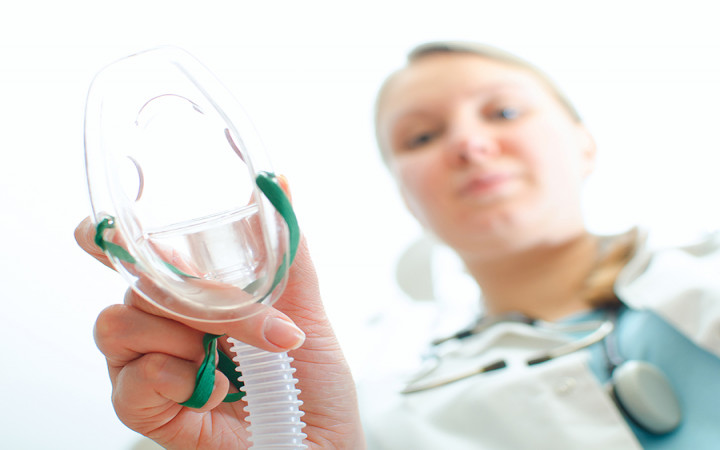Today’s Wonder of the Day was inspired by Hunter. Hunter Wonders, “What is laughing gas?” Thanks for WONDERing with us, Hunter!
Do you look forward to going to the dentist? If you brush and floss like you're supposed to, then a dental check-up probably won't be anything to worry about. If you keep your teeth in tip-top shape, you'll probably just get a cleaning and leave with sparkly teeth whiter than you came with.
From time to time, though, you may need a dental procedure that's a bit more involved than a mere cleaning. Even if you brush and floss after every meal, it's still possible for problems to arise with your teeth.
No one likes to think about having a tooth pulled or getting a root canal. Aren't those procedures really painful? They're actually not as bad as you might think, especially if your dentist gives you laughing gas.
Laughing gas, known scientifically as nitrous oxide, is an odorless, colorless gas used as a local sedative. It's mixed with oxygen and breathed in through a special mask.
It takes effect quickly. Within a minute or so of breathing in nitrous oxide, you'll begin to feel euphoric, which is a fancy way of saying calm, comfortable, and happy. Some people may even feel like laughing, thus the common nickname "laughing gas."
Laughing gas does not put you to sleep. You'll still be aware of what's going on around you. You'll also be able to hear and respond to any requests the dentist may make. As far as physical effects go, some people report feeling lightheaded. Others report tingling in their arms and legs, which may also feel heavier than normal.
In addition to feeling relaxed (you won't worry much about the dental procedure taking place), you will feel less pain. Laughing gas deadens the senses, so any scraping or drilling of the teeth won't seem so painful.
Unlike stronger sedatives, laughing gas wears off quickly. You'll feel back to normal within just a few minutes once the mask is removed. Side effects are rare, but they may include headaches, fatigue, and nausea.
Laughing gas was discovered by chemist Joseph Priestley way back in 1771. It wasn't used much for medical purposes until the late 19th and early 20th centuries, though.
In addition to the dentist's office, there's another place you might see laughing gas being used today: the hospital. Laughing gas is becoming more popular with women giving birth. Rather than using stronger sedatives or anesthesia, laughing gas offers a more natural childbirth experience.
Women using laughing gas report that it helps them relax and makes them feel calm. They can still feel the pain of childbirth, but it's less severe and they're able to remain calmer throughout the birth. While laughing gas use by women giving birth is growing in the U.S., it's already a popular practice in places like Finland, Canada, Australia, and Great Britain, where as many as half or more women use laughing gas during childbirth.




